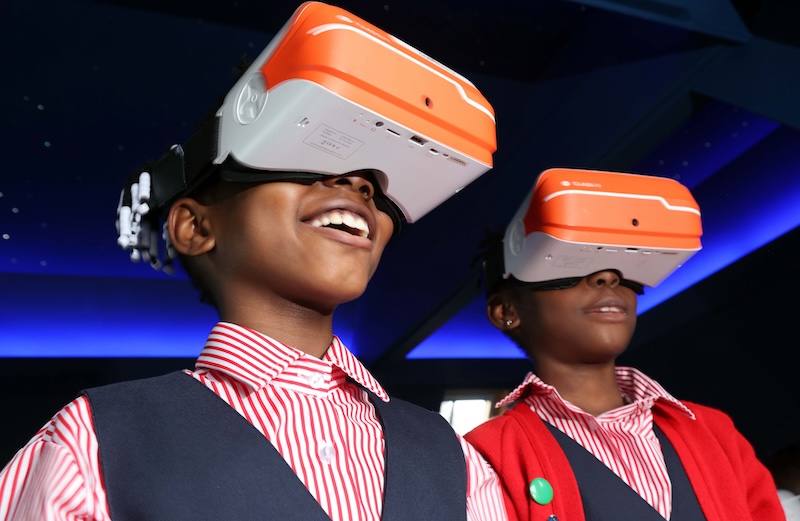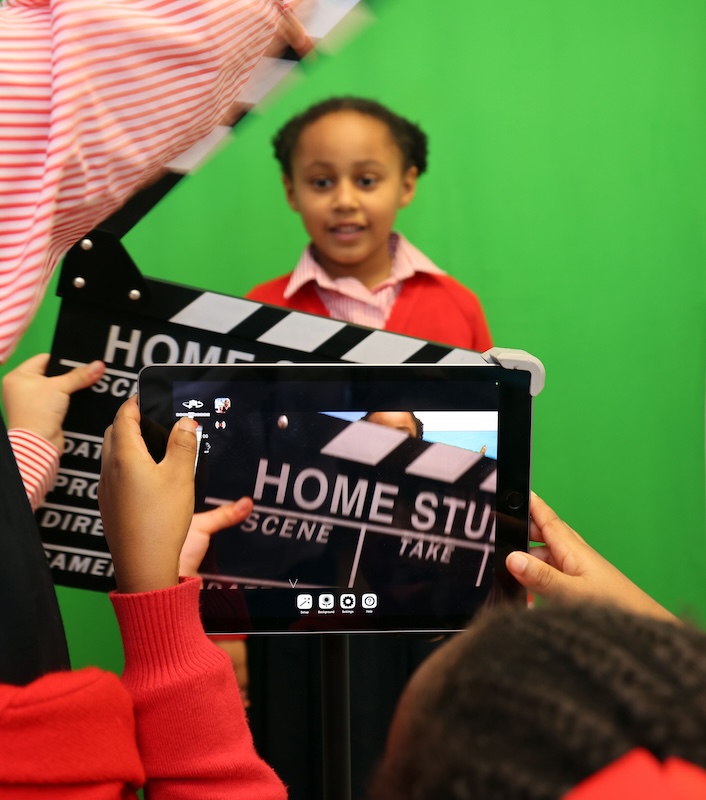The evolution of education: innovative approaches to learning
Posted on 11th Jul 2024 in Which London School?, Technology
St Mary’s School, Hampstead on how schools must keep pace and readily adapt their curriculum in an ever-changing technological era.
In a swiftly evolving world, the educational landscape is undergoing an exciting, and in some ways irreversible, transformation. ‘Traditional’ teaching methods are surrendering to innovative strategies that embrace creativity, critical thinking, and interdisciplinary learning. These new techniques can be embedded across the curriculum, as part of co-curricular enrichment, or as a way to nurture emotional development and resilience. Schools now have more choices than ever before.
‘Creativity is intelligence having fun’ (Albert Einstein)
Some schools have adopted the Creative Curriculum, a teaching approach where pupils learn through a singular creative cross-subject topic. For example, a year group may adopt a theme of ‘Rainforests’ for the term, and that topic would influence learning across the subject spectrum, for example such rainforest-related literature in English, a study of rainforest climate in science, etc. What better way to explore a topic and deepen understanding than to adopt an interdisciplinary creative approach?
A Creative Curriculum topic provides a central learning focus throughout the term, continuing long after a lesson has ended. By allowing pupils to explore topics that spark their passions, it can foster a love for learning and a desire to stretch curiosity. They make connections in their learning, take risks and think deeply about real-world problems. Here at St Mary’s, we greatly value and celebrate the opportunities that a Creative Curriculum can bring within a prep school environment. Children have become naturally curious and resilient as they explore topics in greater depth, allowing them to grow in confidence, preparing them with a skillset that will come to fruition in their senior school life and future careers. An emphasis on character development and interdisciplinary enrichment in a prep school ensures that young children are not only academically stretched but are equipped with essential life skills and a strong sense of social responsibility, as leaders of the future.
The STEAM Generation
Similarly, a focus on STEAM (Science, Technology, Engineering, Arts & Mathematics) is at the forefront of innovative education today. As a Girls’ school, it is perhaps more important than ever at St Mary’s to encourage and celebrate STEAM subjects, where women are so often under-represented (or indeed under-valued), to not only inspire our pupils but empower them and fuel their aspirations. As an interdisciplinary approach to learning, STEAM offers a myriad of holistic opportunities for children to collaborate, get creative, develop their critical thinking, and explore subjects in more ways than ever before. This can, naturally, greatly enhance educational strategies such as the Creative Curriculum.
STEAM in 21st century education and elsewhere must continue to embrace developments in digital technology as well, which will not only complement the teaching of these subjects, but strengthen a schools’ aspirations to cement its forward-thinking, modern reputation. In recent years, St Mary’s has been excited to open a Global Learning Centre: an enrichment hub supporting the deliverance of a STEAM curriculum.

The GLC includes our virtual reality room, the ‘Launch Pad’, with headsets for every pupil, an engineering and robotics department, a green screen for videography, and 3D printers for design and construction projects. It is always a pleasure to see our coding club programme their latest dancing human robot, or our young marketers assisting with the graphic design of our school logo and go into production for a new promotional advert!
Schools must continue to invest in STEAM in all areas of school life, and fully embrace this new digital age. Innovation inspires our future leaders, and it is our responsibility to nurture this.
Integration of Technology
To do so, digital literacy must become as imperative as those ‘traditional’ tropes of school life to ensure classrooms are environments for dynamic, innovative and challenging learning. Younger generations will, after all, spend their lifetimes in a digital world.
We can do so by introducing regular coding opportunities, online homework tasks, and software training, even to those of prep school age. Girls at St Mary’s all have access to their own iPad or Chromebook throughout their educational journey. But as we embrace technology, we must also raise awareness of its dangers. It must be our responsibility to instigate conversations of online safety, privacy, safe social media use, and screen time - all of which, in turn, lead to broader discussions on wellbeing, resilience, and the importance of mental health. For example, our school ‘In Conversation with…’ Q&A series for parents this term focuses on the resilience, digitally and otherwise, of pupils and parents alike.
As we are all now experiencing, today’s artificial intelligence has reached super-human ability. No doubt our role as educators will not only require the integration and teaching of everyday AI within the classroom, but also require us to increase awareness of its dangers and how to control it. The next decade will see AI integrated into all walks of life; its presence in education will no doubt inspire and make possible entirely new ways of innovative learning. But at what cost?
In navigating the dynamic landscape of education, schools like St Mary’s are committed to pioneering approaches that inspire, empower, and prepare pupils for a future defined by innovation and adaptability.
This article first appeared in the 2024/25 edition of Which London School? & the South-East, which you can read in full below: